How to Start Selling AMSOIL Synthetic Motor Oils and Build a Business You’re Proud Of
August 11, 2025
If you’ve ever thought about turning your passion for engines, performance, or powersports into income, becoming a dealer for AMSOIL synthetic motor oils might be the perfect fit. Whether you're looking for a part-time hustle, a side income, or a long-term business opportunity, AMSOIL gives you the tools and flexibility to build something that works on your terms.
Why Sell AMSOIL Synthetic Motor Oils?
AMSOIL has been a trusted name in lubrication technology since 1972. Known for high-performance and long-lasting engine protection, AMSOIL synthetic motor oils are respected by gearheads, weekend warriors, and professionals alike. When you introduce customers to these products, you’re backed by a brand that already has decades of trust and loyalty behind it.
1. Loyal Customers and Repeat Business
Once customers try AMSOIL synthetic motor oils, they rarely go back to conventional brands. These products are formulated for durability, fuel efficiency, and long-term protection—qualities that create loyal repeat buyers and consistent income potential for dealers.
2. Low Startup Costs and Flexible Selling
Starting your AMSOIL business is affordable and scalable. There’s no need to lease retail space or purchase massive inventory upfront. You can work from home, attend motorsports events, or simply start sharing with people in your network. AMSOIL synthetic motor oils are in demand across many markets, from auto shops to enthusiasts.
3. Training and Ongoing Support
When you sign up, you're connected with an established AMSOIL Dealer who helps guide you through setup, product knowledge, and business growth. As part of Huff Oil Group, you’ll receive:
- Marketing tools to help you reach new customers
- Access to AMSOIL product training and materials
- Support from someone who knows the industry and can answer questions when they arise
This support system makes it easier to grow your customer base and sell with confidence, even if you're new to AMSOIL synthetic motor oils.
Who Is This Opportunity For?
You don’t need a background in automotive repair or a business degree. Some of the most successful AMSOIL dealers are car enthusiasts, outdoor lovers, DIY mechanics, or people looking for a steady side business they can grow over time.
If you already talk to others about cars, motorcycles, trucks, boats, or small engines, this can be a natural fit.
Get Started Today
Selling AMSOIL synthetic motor oils can be as simple as sharing what you already believe in. With low startup costs, strong customer retention, and a proven support system, it’s a business you can be proud to build.
Ready to get started?
Learn how to become an AMSOIL Dealer with Huff Oil Group. Prefer to talk to someone first? Request a call back and we’ll walk you through the next steps. Build a business that fits your lifestyle, fueled by the performance of AMSOIL synthetic motor oils.
Why Sell AMSOIL Synthetic Motor Oils?
AMSOIL has been a trusted name in lubrication technology since 1972. Known for high-performance and long-lasting engine protection, AMSOIL synthetic motor oils are respected by gearheads, weekend warriors, and professionals alike. When you introduce customers to these products, you’re backed by a brand that already has decades of trust and loyalty behind it.
1. Loyal Customers and Repeat Business
Once customers try AMSOIL synthetic motor oils, they rarely go back to conventional brands. These products are formulated for durability, fuel efficiency, and long-term protection—qualities that create loyal repeat buyers and consistent income potential for dealers.
2. Low Startup Costs and Flexible Selling
Starting your AMSOIL business is affordable and scalable. There’s no need to lease retail space or purchase massive inventory upfront. You can work from home, attend motorsports events, or simply start sharing with people in your network. AMSOIL synthetic motor oils are in demand across many markets, from auto shops to enthusiasts.
3. Training and Ongoing Support
When you sign up, you're connected with an established AMSOIL Dealer who helps guide you through setup, product knowledge, and business growth. As part of Huff Oil Group, you’ll receive:
- Marketing tools to help you reach new customers
- Access to AMSOIL product training and materials
- Support from someone who knows the industry and can answer questions when they arise
This support system makes it easier to grow your customer base and sell with confidence, even if you're new to AMSOIL synthetic motor oils.
Who Is This Opportunity For?
You don’t need a background in automotive repair or a business degree. Some of the most successful AMSOIL dealers are car enthusiasts, outdoor lovers, DIY mechanics, or people looking for a steady side business they can grow over time.
If you already talk to others about cars, motorcycles, trucks, boats, or small engines, this can be a natural fit.
Get Started Today
Selling AMSOIL synthetic motor oils can be as simple as sharing what you already believe in. With low startup costs, strong customer retention, and a proven support system, it’s a business you can be proud to build.
Ready to get started?
Learn how to become an AMSOIL Dealer with Huff Oil Group. Prefer to talk to someone first? Request a call back and we’ll walk you through the next steps. Build a business that fits your lifestyle, fueled by the performance of AMSOIL synthetic motor oils.

If your steering wheel has ever felt stiff, heavy, or noisy, your power steering fluid could be the culprit. While it’s not the first thing drivers think about, power steering fluid plays a big role in keeping your vehicle safe and easy to handle. Checking and maintaining it regularly helps prevent costly repairs and extends the life of your vehicle. At Huff Oil Group , we exclusively carry AMSOIL oil and lubricants because we believe your vehicle deserves the very best. If you’ve searched “find an AMSOIL dealer near me,” you’re in the right place. Here’s how to check your power steering fluid, when to replace it, and why AMSOIL is the trusted choice for long-lasting protection. Why Power Steering Fluid Matters Power steering fluid is what makes turning your wheel smooth and effortless. It lubricates, reduces wear, and protects the steering pump from damage. But like any fluid, it breaks down over time from heat and contaminants. When that happens, steering gets harder, the system works less efficiently, and parts wear out faster. Power steering fluid also faces some of the harshest conditions under your hood. It’s exposed to extreme heat, collects wear material, and has to perform as a hydraulic fluid, all at once. That’s why using a premium synthetic option is key to protecting your vehicle. Signs It’s Time to Check or Replace Watch for these warning signs that your fluid may need attention: Steering feels heavy or stiff Whining or squealing noises when turning Visible leaks (red, brown, or amber fluid under your car) Fluid looks dark, dirty, or foamy If you notice any of these, it’s time to check your fluid, and likely replace it. How to Check Power Steering Fluid It only takes a few minutes (depending on the type of car you own): Park on level ground and make sure the engine is off and cool. Locate the reservoir, usually labeled near the engine. Check the level using the dipstick or the reservoir markings. The fluid should be between “MIN” and “MAX.” Look at the color. Fresh fluid is clear or amber. If it’s dark or dirty, replace it. How Often Should You Replace It? Unlike engine oil, power steering fluid doesn’t always have a set replacement interval. A good rule of thumb: check it regularly and replace it every 30,000 miles or whenever it looks dirty. Consistently replacing it helps: Prevent expensive pump and hose damage Keep steering smooth and reliable Extend your vehicle’s overall lifespan Why Choose AMSOIL Power Steering Fluid When it comes to protecting your steering system, not all fluids are equal. That’s why Huff Oil Group sells AMSOIL 100% Synthetic Multi-Vehicle Power Steering Fluid. It’s engineered to handle extreme conditions and deliver maximum protection. Here’s why it’s a better choice than conventional fluid: Promotes long component life: Its synthetic chemistry reduces friction and wear, helping pumps and hoses last longer. Performs in extreme temperatures: Unlike conventional fluid that thickens in the cold, AMSOIL stays fluid in low temps for quiet, reliable operation. It also resists thermal breakdown in high heat. Protects against leaks: Helps seals stay soft and flexible to prevent costly leaks. Long service life: Stays cleaner and resists oxidation longer than conventional products. In short, it’s designed for durability, reliability, and peace of mind, exactly what you want in your steering system. Should You DIY or Get Pro Help? Checking fluid levels is an easy DIY job. Replacing the fluid can be done at home too, but a full system flush is often best left to a professional, especially if you want every bit of the old, contaminated fluid out. Whether you do it yourself or have a mechanic handle it, the most important step is making sure you’re topping off and replacing with AMSOIL oil. Protect Your Vehicle With AMSOIL Power steering maintenance might not feel urgent, but it’s critical to keeping your vehicle safe and reliable. A few minutes of attention today can save you from major repair bills tomorrow. At Huff Oil Group, we make it easy to get the AMSOIL products you need. Whether you’re checking levels, topping off, or replacing your fluid entirely, we’ve got the right AMSOIL products to help your vehicle last longer and perform better. Stop searching “find an AMSOIL dealer near me.” You’ve already found one! Huff Oil Group is your local source for AMSOIL, from motor oil to transmission fluid and everything in between. Get started today by browsing our AMSOIL products. Have any questions? Contact us today.
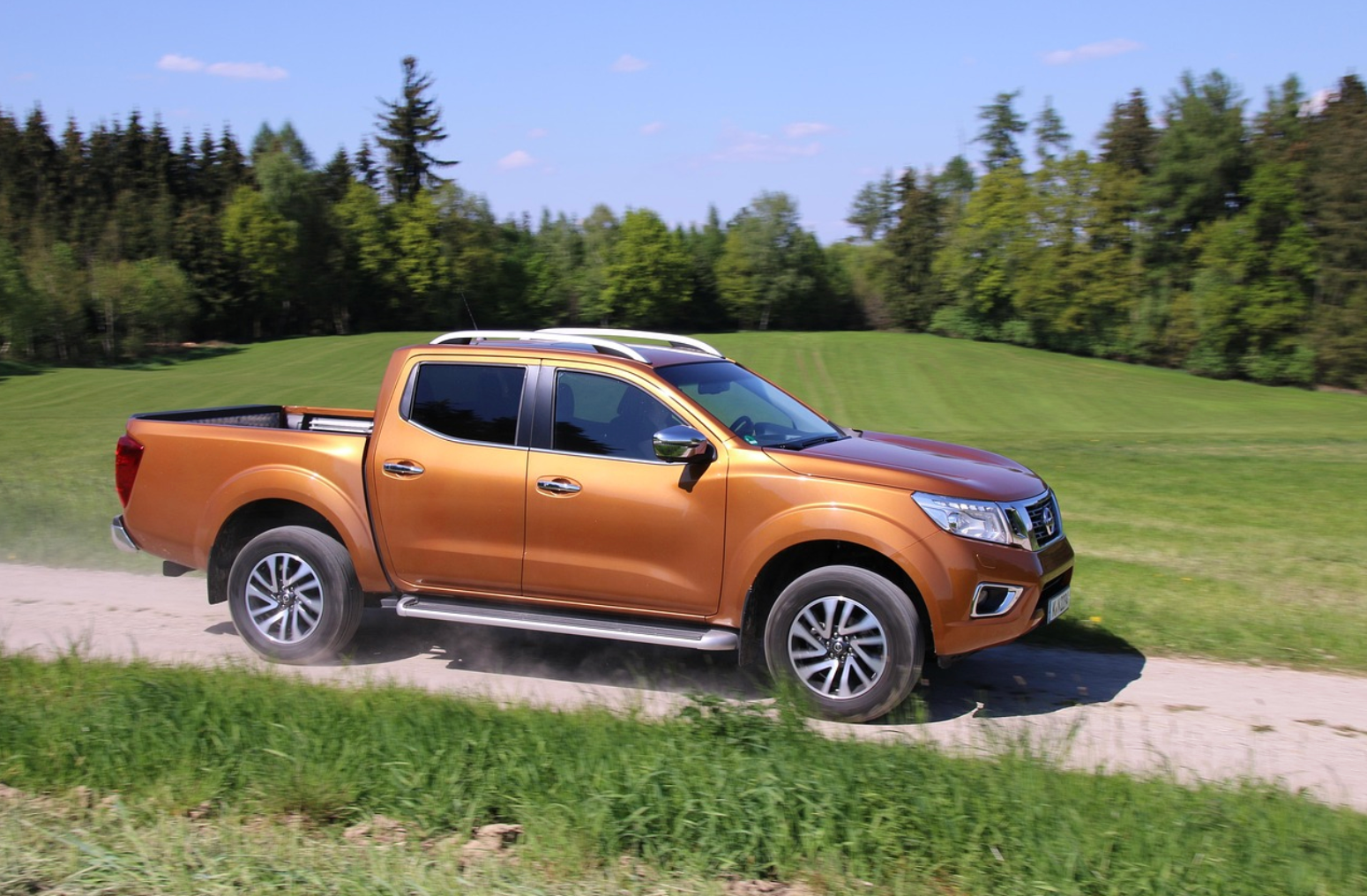
Picking the right motor oil is one of the most important decisions you can make for your vehicle’s long-term health. The wrong oil can leave your engine underprotected, while the right one keeps it running clean, smooth, and strong. You probably already know that AMSOIL stands for quality. At Huff Oil Group, we only sell AMSOIL because it consistently outperforms conventional oils and helps drivers get the most out of their cars, trucks, and SUVs. So which AMSOIL motor oil is right for you? Why Choose AMSOIL Oil AMSOIL was the first company in the world to develop an API-certified synthetic motor oil. Since then, it has built a reputation for durability, performance, and protection that drivers trust. Here’s what sets AMSOIL apart from conventional oils: Superior wear protection for critical engine parts Reliable performance in extreme cold and heat Cleaner engines thanks to advanced detergents Extended drain intervals, meaning fewer oil changes In short, AMSOIL is engineered to do more than just meet minimum standards. It is built to exceed them. The AMSOIL Lineup Explained Every driver has different needs. That’s why AMSOIL offers several formulations, each tailored for specific vehicles and driving conditions. Signature Series Synthetic Motor Oil This is the flagship product and AMSOIL’s most advanced formula. The Signature Series offers up to 25,000 miles or one year of protection when paired with an AMSOIL filter. Best for: Drivers who want maximum performance, longest protection intervals, and confidence that their engine is covered in all conditions. Ideal vehicles: Sedans, crossovers, SUVs, trucks, and performance cars. Why it stands out: Keeps engines exceptionally clean, reduces wear under high stress, and delivers consistent performance no matter the weather. Extended-Life Synthetic Motor Oil (XL) Designed for drivers who want great protection with fewer oil changes, but at a more budget-friendly price point than Signature Series. It provides up to 12,000 miles or one year between oil changes. Best for: Daily commuters and families who want reliable oil without overthinking it. Ideal vehicles: Cars and SUVs driven regularly but not under extreme conditions. Why it stands out: Strong protection against deposits , oxidation, and low-speed pre-ignition (important for today’s turbocharged engines). OE Synthetic Motor Oil OE is made for drivers who stick to manufacturer-recommended oil change intervals but still want the benefits of AMSOIL synthetic oil. Best for: Budget-conscious drivers who want high-quality oil but don’t plan to extend drain intervals. Ideal vehicles: New cars, high-mileage commuters, and anyone following standard OEM maintenance schedules. Why it stands out: Exceeds industry standards for wear protection and keeps engines cleaner than conventional oil. High-Mileage Synthetic Motor Oil Once your vehicle crosses 75,000 miles, it may need extra protection. High-Mileage Synthetic is formulated with boosted detergents and additives to fight sludge and protect older seals. Best for: Drivers with aging vehicles who want to extend the life of their car or truck. Ideal vehicles: Cars and SUVs with 75,000+ miles. Why it stands out: Helps reduce oil consumption, minimizes leaks, and protects against breakdown in older engines. European Car Formula Many European vehicles have specific requirements that not all oils meet. AMSOIL European Car Formula is engineered to meet or exceed manufacturer specifications for brands like BMW, Mercedes-Benz, Volkswagen, Audi, and Porsche. Best for: European car owners who want to protect advanced engines designed for performance and precision. Ideal vehicles: European luxury and performance cars. Why it stands out: Tailored chemistry for high-performance European engines, including turbocharged and direct-injection systems. Hybrid Motor Oil Hybrid engines face unique challenges like frequent stop-and-go driving, higher operating temperatures, and frequent temperature swings. AMSOIL Hybrid Motor Oil is designed to handle these stresses. Best for: Hybrid vehicle owners who want specialized protection. Ideal vehicles: Toyota Prius, Honda Insight, Ford Escape Hybrid, and other hybrid models. Why it stands out: Excellent low-temperature flow, corrosion protection, and deposit control for hybrid engines. How to Decide Which AMSOIL Motor Oil For Your Car With so many options, how do you pick the right motor oil ? If you want the best protection money can buy, choose the Signature Series. If you want extended protection but not maximum intervals, XL Synthetic is a great choice. If you stick to regular manufacturer schedules, OE Synthetic gives you AMSOIL quality at a great value. If your vehicle is older, High-Mileage Synthetic helps keep it running longer. If you drive a European vehicle, European Car Formula is the way to go. If you drive a hybrid, Hybrid Motor Oil is designed specifically for your engine. Protect Your Investment Your vehicle is one of the biggest investments you own, and the oil you put in it is the lifeblood of the engine. Choosing AMSOIL gives you peace of mind that your engine is protected by one of the most trusted synthetic oils on the market. At Huff Oil Group, we make it easy to get the AMSOIL products you need. Whether you drive a car, truck, SUV, or performance vehicle, we can help you choose the right oil for your engine. No need to keep searching “find an AMSOIL dealer near me.” You’re already in the right place. Contact The Top AMSOIL Dealer Today Whether you are changing your oil at home or having a professional do it for you, AMSOIL has a product designed to fit your vehicle and your lifestyle. Contact Huff Oil Group today - we’ll help you pick the AMSOIL motor oil that keeps your car, truck, or SUV performing at its best.
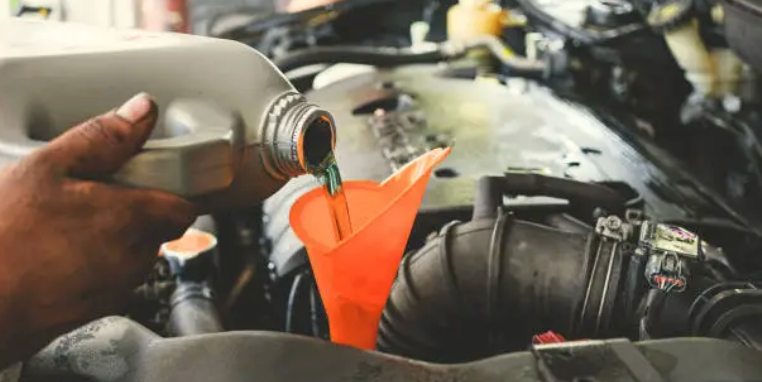
You know you need an oil change, but what type of oil should you actually be using? For new car owners or anyone buying oil themselves for the first time, it’s easy to assume all motor oil is the same. In reality, oil isn’t one-size-fits-all. The best oil for your vehicle depends on its make and model, how you drive, and even the weather where you live. Choosing the right oil is one of the simplest but most important things you can do to keep your engine healthy. This guide will walk you through how to find the correct oil and why it matters, with a look at why Huff Oil Group recommends AMSOIL full synthetic motor oils for superior protection. Where to Find Your Vehicle’s Oil Recommendation The good news? You don’t have to guess. Your manufacturer already has the answer! Start with your owner’s manual. It will tell you the recommended oil viscosity (like 5W-30) and whether your vehicle requires conventional or synthetic oil. If the manual isn’t available, check the oil cap under your hood. Many vehicles have the correct weight printed right on top. You can also use your manufacturer’s website or oil lookup tools. For an easier option, AMSOIL offers a free online product lookup tool that shows you exactly which oil products fit your make and model. Factors That Affect Which Oil You Should Use Even with a manufacturer recommendation, there are a few other factors that might affect your oil choice: Vehicle age and mileage: Older engines or those with high mileage might benefit from oils designed to reduce wear and leaks. Driving habits: If you mainly drive short distances, haul trailers, or do lots of highway miles, your engine experiences different stress levels that affect oil performance. Climate and weather: Colder areas may need oil that flows more easily at low temps, while hot climates demand oil that withstands heat. Warranty requirements: Some modern engines require full synthetic oil to maintain warranty coverage. Oil Types at a Glance There are four common types of oil you’ll find on the shelf: Conventional oil: The standard option, best for older or low-mileage engines. Synthetic oil: Engineered for better performance, protection, and longevity. Synthetic blends: A mix of conventional and synthetic. Offers better performance than conventional oil at a lower price point. High-mileage oil: Formulated with additives to help protect aging engines. If you’re aiming for reliability, longevity, and superior engine protection, full synthetic is the way to go. AMSOIL was the first synthetic motor oil to meet API service requirements and continues to lead the industry in performance. What Can Go Wrong If You Use the Wrong Oil? Choosing the wrong oil doesn’t always result in instant damage, but over time, it can cause real problems: Increased engine wear from poor lubrication Poor fuel economy and sluggish performance, especially in extreme temperatures Potential warranty issues if the oil doesn’t meet manufacturer specs The fix? Stick with oil that meets or exceeds your car’s recommendations. Quality synthetic oil protects your engine better, especially under stress. Wrap-Up: Make the Right Choice When in doubt, check your car’s oil requirements and don’t be afraid to ask questions. Huff Oil Group is here to help you keep your car running at its best. If you're looking for maximum performance and long-lasting protection, we highly recommend AMSOIL’s full synthetic motor oils . They’re ideal for anyone who wants to extend engine life, improve efficiency, or drive in extreme conditions. Have questions about which oil is right for your vehicle? Request a call back , and our team will walk you through the best option for your needs.

You check your dipstick and notice the oil level has dropped significantly since your last change. Or maybe you've spotted blue smoke puffing from your exhaust pipe. Either way, you're asking the same question: why is my car burning through oil so quickly? Oil consumption is a normal part of engine operation, but when it accelerates beyond typical levels, it's time to investigate. Let's walk through the most common culprits behind excessive oil burn-off, from simple fixes to more serious engine issues. Normal vs. Excessive Oil Consumption First, let's establish a baseline. Most engines consume some oil during normal operation, typically between one quart every 1,000 to 3,000 miles, depending on the vehicle's age and design. High-performance engines and older vehicles often consume more oil than newer, lower-performance engines. However, if you're adding oil every few hundred miles or noticing a dramatic drop in oil levels between changes, your engine is burning oil faster than it should. Common Causes of Rapid Oil Consumption Driving Habits and Conditions Your driving style plays a significant role in oil consumption. Aggressive driving, frequent stop-and-go traffic, and extended high-RPM operation all increase oil burn-off. Highway driving at consistent speeds typically results in lower oil consumption than city driving with constant acceleration and deceleration. Extreme temperatures also affect oil consumption. In hot weather, oil becomes thinner and more prone to evaporation, while cold weather can cause seals to contract, potentially allowing oil to escape. Minor Leaks and Seals Small external leaks might not leave obvious puddles under your car but can still contribute to oil loss. Common leak points include: Oil pan gasket Valve cover gasket Oil filter housing Drain plug seal These leaks often start small and worsen over time. A quick visual inspection of your engine bay and the ground where you park can help identify external leaks. Worn Piston Rings This is where we enter more serious territory. Piston rings create a seal between the piston and cylinder wall, preventing oil from entering the combustion chamber. When these rings wear down, oil can slip past and burn during combustion, creating that telltale blue smoke from the exhaust. Worn piston rings often develop gradually in high-mileage vehicles, but they can also result from poor maintenance, overheating, or using low-quality oil that doesn't provide adequate protection. Valve Seal Problems Valve seals prevent oil from leaking down the valve stems into the combustion chamber. When these seals deteriorate, oil can seep past and burn, especially noticeable when starting the engine after it's been sitting for a while. You might see a puff of blue smoke upon startup that clears after the engine warms up. Positive Crankcase Ventilation (PCV) System Issues The PCV system recirculates crankcase vapors back into the engine for combustion. When this system malfunctions, it can create excessive pressure in the crankcase, forcing oil past seals and gaskets. A faulty PCV valve is relatively inexpensive to replace and can significantly reduce oil consumption. Turbocharger Problems If your vehicle has a turbocharger, worn turbo seals can allow oil to enter the intake or exhaust system. This often presents as blue smoke from the exhaust, particularly under acceleration. The Oil Quality Factor Here's something many drivers overlook: the quality of your motor oil directly impacts consumption rates. Low-quality conventional oils break down more quickly under heat and stress, leading to increased volatility and burn-off. Conventional oils contain more volatile compounds that evaporate at high temperatures, essentially disappearing from your engine. Additionally, as conventional oil degrades, it loses its protective properties, potentially accelerating wear on critical engine components like piston rings and valve seals. Full synthetic motor oils, particularly high-quality formulations like AMSOIL, are engineered with superior base stocks and additive packages that resist volatility and thermal breakdown. This means they maintain their protective properties longer and burn off at significantly lower rates than conventional oils. For older or high-mileage vehicles, this difference becomes even more pronounced. AMSOIL's full synthetic motor oils provide better seal conditioning, helping to restore flexibility to aged seals while offering superior protection against wear that could worsen oil consumption issues. When to See a Mechanic While some oil consumption causes are relatively minor, others require professional diagnosis and repair. Consider visiting a mechanic if you notice: Blue smoke from the exhaust consistently Oil consumption exceeding one quart every 1,000 miles White smoke that could indicate coolant mixing with oil Unusual engine noises accompanying oil loss Sudden, dramatic increases in oil consumption A compression test, leak-down test, or other diagnostic procedures can help pinpoint the exact cause of excessive oil consumption. Prevention and Solutions The best defense against rapid oil consumption is proactive maintenance. Choose Quality Oil: Upgrading to a high-quality full synthetic oil can immediately reduce consumption in many vehicles. The superior thermal stability and lower volatility of premium synthetics mean more oil stays in your engine where it belongs. Regular Oil Changes: Don't extend oil change intervals beyond manufacturer recommendations, especially if you're already dealing with consumption issues. Monitor Oil Levels: Check your oil at least monthly, or more frequently if you know your vehicle consumes oil. Catching low levels early prevents damage that could worsen consumption. Address Issues Promptly: Fix minor leaks and replace worn components before they lead to more serious problems. Making the Switch If you're tired of constantly topping off your oil or want to give your engine the best protection possible, consider switching to AMSOIL full synthetic motor oil. Its advanced formulation is specifically designed to resist burn-off while providing superior engine protection, particularly beneficial for older or high-mileage vehicles prone to oil consumption. The difference in oil consumption between conventional and high-quality synthetic oil can be dramatic, often paying for the upgrade cost through reduced oil purchases alone. Take Action Don't let excessive oil consumption damage your engine or drain your wallet. Start by monitoring your oil levels more closely and consider the factors we've discussed. Whether it's adjusting your driving habits, fixing minor leaks, or upgrading to a better oil, taking action now can save you from costly repairs down the road. Ready to explore high-quality oil options for your vehicle? Check out our gasoline oil products or learn more about choosing the right viscosity for your specific needs. For personalized recommendations based on your vehicle and driving conditions, request a callback from our team or browse our complete product information to find the right solution for your engine. Your engine works hard for you. Give it the protection it deserves.
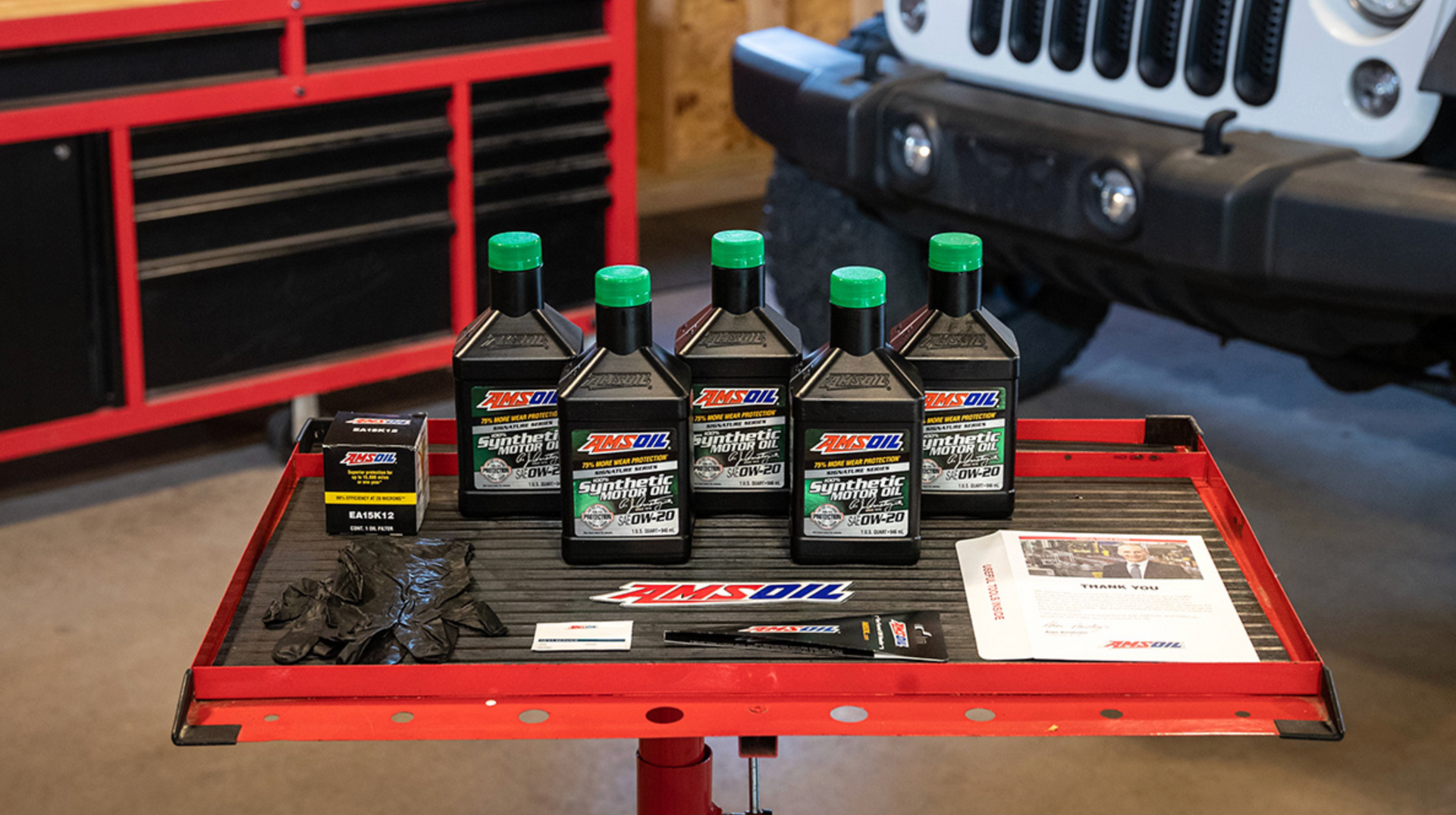
Why Is AMSOIL Not Sold in Stores? If you've been shopping for motor oil at your local auto parts store or big box retailer, you might have noticed something: AMSOIL products are nowhere to be found on the shelves. This absence often raises questions for potential customers who've heard about AMSOIL's reputation for quality but can't locate it in their usual shopping spots. The answer isn't what you might expect. AMSOIL's absence from traditional retail shelves isn't due to limited availability or distribution challenges. It's actually a deliberate business strategy that puts customer service and product expertise first. The Dealer-Based Distribution Model AMSOIL operates on a dealer-based distribution system rather than traditional retail channels. This means their products are sold through a network of independent dealers who specialize in AMSOIL products and lubrication solutions, rather than being stocked alongside dozens of other oil brands on retail shelves. This model might seem unusual in today's retail landscape, but it serves a specific purpose that benefits both the company and its customers. Why AMSOIL Chose This Approach Personalized Product Selection Walk into any auto parts store and you'll face an overwhelming wall of motor oil options. Different viscosities, conventional versus synthetic, various brand claims, and conflicting price points can make selection confusing. Most retail employees, while helpful, aren't specialized in lubricants and can't provide detailed guidance on which product best suits your specific vehicle, driving conditions, and performance needs. AMSOIL dealers, on the other hand, are trained specialists who understand the technical aspects of lubrication. They can recommend the exact product formulation for your vehicle's engine, transmission, differential, and other systems based on your driving habits, climate, and performance goals. Expert Technical Support Synthetic lubricants are more complex than conventional oils, with different formulations designed for specific applications. AMSOIL dealers provide ongoing technical support, helping customers understand extended drain intervals, compatibility with existing fluids, and optimal maintenance schedules. This level of expertise simply isn't available when purchasing oil off a retail shelf. You get the product, but you don't get the knowledge that maximizes its benefits. Quality Control and Product Integrity The dealer network allows AMSOIL to maintain tighter control over how their products are stored, handled, and sold. Retail environments can expose lubricants to temperature extremes, contamination, or extended shelf life that might compromise product quality. The dealer model ensures products reach customers in optimal condition. Building Long-Term Relationships Rather than one-time transactions, AMSOIL's dealer model fosters ongoing relationships. Dealers track customer purchases, remind them of maintenance schedules, and can adjust recommendations as vehicles age or driving patterns change. This relationship-based approach provides value that extends far beyond the initial product purchase. The Premium Positioning Advantage AMSOIL's distribution strategy also reinforces its premium market position. By avoiding the race-to-the-bottom pricing common in retail chains, AMSOIL can focus on product quality and customer education rather than competing primarily on price. Premium products often require premium service, and the dealer model delivers exactly that. When you purchase AMSOIL, you're not just buying lubricants; you're gaining access to specialized knowledge and ongoing support. How to Access AMSOIL Products Just because AMSOIL isn't sold in traditional retail stores doesn't mean it's difficult to obtain. The dealer network makes purchasing convenient through multiple channels: Direct from Dealers Established dealers like Huff Oil Group provide direct sales with personalized service. They can recommend specific products for your applications, answer technical questions, and often provide delivery options that rival or exceed retail convenience. Online Ordering Many AMSOIL dealers offer comprehensive online catalogs with detailed product information, application guides, and easy ordering systems. You can research products thoroughly and place orders from home, often with faster delivery than traditional retail. Technical Resources AMSOIL provides extensive technical guides and resources that help customers understand their products and applications. This educational approach ensures customers make informed decisions rather than impulse purchases. The Customer Experience Difference The dealer model creates a fundamentally different customer experience compared to retail shopping. Instead of navigating product selection alone, you have access to expertise that can save money through proper product selection, extended drain intervals, and improved equipment longevity. Consider the difference: purchasing oil from a retail shelf gives you a product, while purchasing through an AMSOIL dealer gives you a solution tailored to your specific needs. Real Customer Satisfaction The proof of this approach's effectiveness lies in customer satisfaction. AMSOIL dealers consistently receive positive feedback from customers who appreciate the personalized service and expert guidance. Customer reviews often highlight not just product quality, but the value of dealer expertise in selecting and using AMSOIL products effectively. Comprehensive Product Range Through the dealer network, customers gain access to AMSOIL's complete product line, including specialized formulations that might not justify shelf space in general retail stores. Whether you need gasoline engine oils, motorcycle lubricants, or two-stroke motor oils, dealers can provide exactly what your equipment requires. Making the Connection If you're interested in experiencing the AMSOIL difference, connecting with a dealer is straightforward. Established dealers like Huff Oil Group combine AMSOIL's product quality with personalized service that addresses your specific lubrication needs. Rather than guessing which product might work best for your vehicle, you can get expert recommendations based on your actual driving conditions, maintenance preferences, and performance goals. This guidance often proves more valuable than the convenience of retail shopping. The Absence Benefits You AMSOIL's absence from retail shelves isn't a limitation; it's a strategic choice that prioritizes customer service, product expertise, and long-term relationships over convenience alone. When you choose AMSOIL through their dealer network, you're accessing not just premium lubricants, but premium service that maximizes the value of your investment. The next time you need lubricants for your vehicle, equipment, or machinery, consider the advantages of working with specialists who understand both the products and your specific needs. Ready to experience the difference that expert guidance makes? Contact Huff Oil Group to discuss your lubrication needs and discover which AMSOIL products can best serve your applications. Our team is ready to provide the personalized service and technical expertise that sets the dealer experience apart from retail shopping.

Always consult the owner's manual of your motorcycle, as the manufacturer will indicate the type of oil recommended for your model. You've invested thousands in aftermarket exhausts, suspension upgrades, and sticky tires. You've memorized every corner of your home track and perfected your body positioning. But there's one critical component that most performance riders completely overlook, and it could be costing you precious seconds every lap. Your motorcycle oil. While riders obsess over gear ratios and tire compounds, many are running degraded or inappropriate oil that's actively working against their performance goals. On track days and race weekends, your engine operates under extreme conditions that push oil far beyond street riding demands. The wrong oil choice doesn't just risk engine damage, it creates measurable performance losses that accumulate over every session. How Oil Impacts Track Performance When you're pushing your motorcycle to its limits, oil becomes far more than just engine protection. It's a performance component that directly affects three critical areas: Heat Management: Track riding generates intense heat that can break down inferior oils, leading to viscosity loss and reduced protection. As oil thins under extreme temperatures, it fails to maintain proper film strength between moving components, allowing metal-to-metal contact that robs power and creates friction. Friction Reduction: Every bit of internal friction steals horsepower from reaching your rear wheel. High-quality oils with advanced friction modifiers can free up measurable power, while old or inappropriate oils create drag that you'll feel in acceleration and top-end performance. Engine Response: Fresh, properly formulated oil maintains consistent viscosity across temperature ranges, ensuring your engine responds predictably to throttle inputs. Degraded oil creates inconsistent lubrication that can make your bike feel sluggish or unpredictable during critical moments on track. Understanding Engine Lubrication Under Stress Track conditions push your engine through different lubrication scenarios that street riding rarely encounters: Full Film Lubrication occurs when thick oil coats create complete separation between metal surfaces. This hydrodynamic lubrication is ideal for high-speed sections where oil adheres to moving parts and gets pulled between sliding surfaces, like crank journals and rod bearings. Boundary Lubrication happens during low-speed, high-load situations—think hairpin exits where you're loading the engine hard at low RPM. Here, anti-wear additives create protective films on metal surfaces, protecting main bearings, gears, piston rings, and transmission components from friction damage. Mixed Lubrication combines both scenarios, which is exactly what happens during varied track conditions as you transition from hard braking zones to full acceleration. Choosing the Right Oil Type for Performance Mineral Oil: Derived from crude petroleum, these oils flow slower through engines and don't handle heat as effectively as synthetic alternatives. While adequate for older engines and smaller displacement bikes, mineral oils can increase fuel consumption and decrease performance under track conditions. Semi-Synthetic Oil: These blends combine mineral and synthetic bases, offering better low-temperature performance and oxidation resistance than straight mineral oils. They're suitable for riders seeking improved performance without full synthetic pricing, though they still don't match pure synthetic capabilities under extreme stress. Synthetic Oil: Formulated through sophisticated laboratory processes, synthetic oils provide superior performance for modern motorcycles, especially those with larger engine capacities (over 200cc). They maintain viscosity under extreme temperatures, offer exceptional lubrication under high loads, and provide the protection demanded by track conditions. Decoding Oil Viscosity Numbers The numbers on your oil container indicate viscosity—the oil's flow characteristics at different temperatures. A 10W-40 oil has a viscosity rating of 10 when cold and 40 when hot. Lower cold viscosity numbers mean better lubrication during warm-up periods, while the hot viscosity affects protection under operating temperatures. Generally, higher viscosity oils suit older engines with more clearances, while lower viscosity oils work better in newer, tighter engines. However, track conditions may require different viscosity considerations than street recommendations. Beyond Oil: Other Performance Factors While oil is crucial, other easily overlooked factors can impact track performance: Air filter condition affects breathing efficiency Chain lubrication and tension impacts power transfer Brake fluid age influences feel and consistency Coolant condition affects heat management Fuel quality impacts combustion efficiency However, none of these factors operate in isolation—they all depend on proper lubrication to function optimally. Essential Oil Selection Tips Follow Manufacturer Guidelines: Each motorcycle requires specific oil types indicated in the owner's manual. These recommendations ensure proper engine operation and maintain warranty coverage. Choose Quality Brands : Invest in oils from recognized manufacturers with proven track records. Poor-quality oils can cause long-term engine damage that far exceeds any cost savings. Consider Your Conditions : Track riding, climate, and engine modifications may require different viscosity choices than standard recommendations. Consult experienced mechanics familiar with performance applications. Monitor Change Intervals : Track sessions are harder on oil than street miles. Consider more frequent changes during active track seasons. Maximize Your Track Potential Don't let subpar lubrication hold back your track performance. While other riders focus solely on suspension settings and tire pressure, you can gain a competitive advantage through proper oil selection and maintenance. Ready to unlock your motorcycle's full potential? Huff Oil Group offers premium AMSOIL racing motor oils specifically engineered for high-performance applications. These advanced formulations deliver exceptional horsepower gains, reduce friction, and provide unparalleled protection under extreme track conditions. With superior additive technology and base oils designed for competitive racing, Huff Oil Group's products help optimize engine responsiveness and maintain peak performance when every second counts. Discover our racing motor oil solutions or request a consultation to find the perfect oil for your track setup. Your next personal best might be just an oil change away. For comprehensive oil guides and performance recommendations, visit our technical resources to dive deeper into lubrication science.

Every rider wants their motorcycle to deliver the same thrill and performance ride after ride, time after time. Unfortunately, eventually every bike starts to feel a bit sluggish or not as responsive as it once was. Often, the culprits of these slowdowns aren’t major mechanical failures, but smaller maintenance issues that get overlooked. Below, we’ll explore five hidden reasons your motorcycle’s performance may be declining, along with real-world tips to diagnose and fix each issue. Keeping on top of these will help ensure your bike runs smoothly every time you go out to ride. 1. Dirty or Clogged Air Filter A motorcycle’s engine needs a steady flow of clean air for efficient combustion. If your air filter is clogged with dust, dirt, or pollen, it chokes the engine by restricting airflow. The result is a richer fuel mixture (too much fuel, not enough air) that causes incomplete combustion. You’ll likely experience symptoms such as loss of power, sluggish acceleration, poor fuel economy, or rough idling when the filter is dirty. Inspect your air filter regularly, especially if you often ride in dusty or dirty conditions. Most motorcycles make this easy, the filter is usually accessible under the seat or tank. If the filter looks visibly dirty (paper filters will appear dark and dusty, foam filters caked with debris), it’s time to clean or replace it. As a rule of thumb, many riders clean or change their air filter about 1-2 times per year, but always follow your bike manufacturer’s recommendations. 2. Worn or Fouled Spark Plugs Spark plugs might be small, but they play a colossal role in engine performance. These plugs ignite the air-fuel mixture in the cylinder, and if they’re worn out or fouled (covered in carbon, oil, or fuel deposits), the ignition spark weakens or misfires. A bad plug can lead to incomplete combustion in one or more cylinders, resulting in a noticeable drop in power and acceleration. In fact, a worn-out spark plug can cause sluggish throttle response, reduced power output, rough idling, and even misfires. To check your spark plugs, remove them using the proper socket (ensure the engine is cool first). Examine the electrodes: a healthy plug will have a light brown or grayish tan deposit. If you see heavy black carbon fouling (dry soot) or oily deposits, that plug isn’t firing optimally. Also, check the plug gap and tip wear; an excessively wide gap or eroded tip can weaken the spark. Cleaning fouled plugs can be a temporary fix (using a wire brush or spark plug cleaner), but the best solution is to replace them. Spark plugs are relatively inexpensive, and new plugs can make a dramatic difference in engine smoothness and power. Riders with high-performance bikes or who frequently ride hard should consider inspecting plugs more often (every few thousand miles). When installing new plugs, always use the correct type and gap specified by the manufacturer. 3. Improper Chain Tension or Maintenance The final drive chain is the crucial link between your engine and the rear wheel – if it’s not in good shape, your bike’s performance (and safety) can suffer. An improperly tensioned chain (either too loose or too tight) can subtly rob power and make your motorcycle feel less responsive. A loose chain will slap around, causing jerky acceleration and even momentary power loss as it takes up slack. In worst cases, it could jump off the sprocket, which is dangerous and can damage the engine casings. On the other hand, a chain that’s over-tightened causes excess friction and stress on the drivetrain; this not only saps engine power but can also impede your rear suspension’s movement and accelerate wear on sprocket bearings. Additionally, a dry or rusty chain that hasn’t been lubricated creates extra drag. The engine works harder to turn it, which can make acceleration feel labored. Signs & Solutions You should check your chain slack periodically (many riders do this every few fuel refills or every couple of weeks). Find the manufacturer’s recommended chain slack (often listed on a sticker on the swingarm or in the owner’s manual). With the bike on a stand or held upright, spin the rear wheel and find the chain’s tightest point; press up on the chain mid-way between the sprockets – it should have the specified amount of vertical movement (typically around 0.75–1.25 inches, or 20–30 mm, but varies by bike). If it’s outside that range, an adjustment is needed. Use the adjusters on the swingarm to achieve proper tension, making small, even tweaks on each side and re-checking slack. While adjusting, also inspect and lubricate the chain. A well-lubed chain not only lasts longer but also runs quieter and more efficiently. 4. Outdated or Low-Quality Engine Oil Engine oil isn’t just a “lubricant” in your motorcycle, it’s also responsible for cooling, sealing, and cleaning internal components. If you’ve been running on old, broken-down oil, your engine’s performance can decline over time. Worn-out oil loses viscosity and its ability to reduce friction. This means more metal-on-metal contact inside the engine, which can make your bike feel sluggish and hotter than normal due to increased friction. Moreover, oil that’s past its prime can form sludge and deposits in the engine. These harmful deposits coat parts and narrow oil passages, impeding performance. In fact, as engine deposits build up, they can “lead to loss of performance” by preventing the efficient operation of moving parts. You might notice slower revving, reduced peak power, or noisier engine operation when the oil is overdue for a change. Check your oil level and condition via the dipstick or sight glass. Healthy oil is typically golden or light brown (for fresh oil); as it ages, it turns dark brown or black and may smell burnt. If your oil is very dark, gritty, or over a year old, it’s likely hurting performance. The fix is straightforward: change the oil and oil filter. Always use the oil grade recommended by your manufacturer (e.g., 10W-40, 20W-50, etc.), and opt for a high-quality oil (premium synthetic oils tend to maintain their protective qualities longer under hard use), such as AMSOIL . 5. Old or Moisture-Contaminated Brake Fluid While brake fluid might not seem related to “engine performance,” it dramatically affects your riding performance, you can’t go fast if you can’t stop confidently. Brake fluid is hygroscopic, meaning it absorbs water from the air over time. As the fluid ages or picks up moisture, two things happen: First, its boiling point drops. Under hard braking (say, coming down a mountain or braking repeatedly on a track day), the brakes generate intense heat. Fresh brake fluid can handle this heat, but stale, wet fluid may boil in the brake lines, turning into compressible gas. This leads to a spongy brake lever and a severe loss of braking power (a condition known as brake fade). In a panic stop, this could mean the difference between a quick stop and overshooting your mark. Second, moisture causes corrosion inside the brake system. Water in the fluid can rust the master cylinder, calipers, and brake lines from within, or gunk them up with sediments. This not only harms expensive components but can also make the brake action inconsistent. Diagnosis & Fix Inspect the brake fluid in the master cylinder reservoir (usually a small transparent or translucent container near your handlebars for the front brake, and near the foot pedal for the rear). Look at the fluid color, new brake fluid is clear or light amber. If yours is murky brown or almost black, it’s well past time to change it. Another sign is if your brake lever or pedal feels soft or “sinks” when held, that could indicate moisture-induced fade or air bubbles from boiling. The cure is to flush and bleed the brake system with fresh fluid. Brake fluid should typically be replaced every 2 years (or as specified in your manual), regardless of mileage, because it naturally absorbs moisture from the atmosphere. This is a bit more involved than an oil change, because you need to bleed the brakes to remove all air. If you’re mechanically inclined, you can do it with a clear tube and wrench (always use the correct DOT rating fluid). Otherwise, a shop can perform a brake service for you. Once replaced, you’ll immediately notice a firmer, more responsive brake feel. Keeping fresh, moisture-free brake fluid in your bike ensures you have consistent stopping power, an often overlooked aspect of overall performance confidence. Enjoy Your Ride Don’t let these “hidden” issues sap the joy from your riding. A motorcycle that isn’t performing like it used to may just be crying out for a bit of TLC in these areas. By regularly checking and maintaining your air filter, spark plugs, chain, engine oil, brake fluid, and fuel system, you’ll ensure your bike stays in top form. The devil is in the details with performance: a $10 filter or a simple fluid change can often make as much difference as expensive performance upgrades. Not to mention, picking the correct synthetic motorcycle oil, such as AMSOIL . Stay proactive with maintenance, and both you and your motorcycle will continue to enjoy the performance you remember.
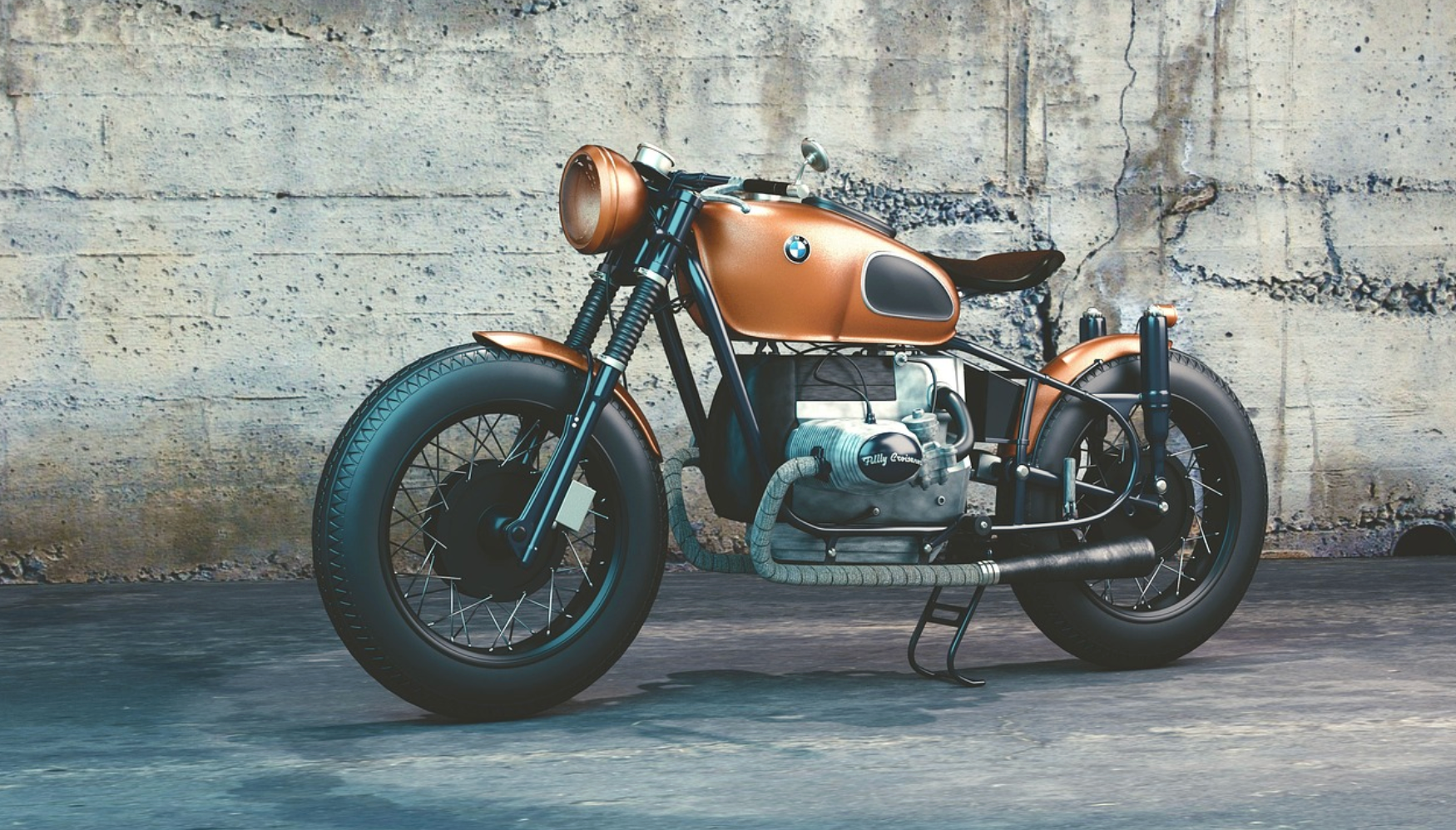
Picking the right motorcycle goggles can make or break your ride. Whether you're hitting the motocross track, exploring trails, or cruising the streets, your goggles need to match how and where you ride. The wrong pair will leave you squinting, fogging up, or constantly adjusting your gear when you should be focused on the road ahead. Know Your Riding Style Different types of riding throw different challenges at you. Motocross riders deal with flying dirt, mud, and light that changes by the second. Dual-sport riders need gear that works everywhere – from dusty trails to sudden rainstorms. Street riders want clear vision through traffic and comfort for those longer rides. Instead of grabbing whatever looks cool, think about what you actually need for your type of riding. Motocross Motorcycle Goggles: Tough and Ready When you're racing or riding hard off-road, your motorcycle goggles take a beating. You need features that keep working when things get rough. Tear-offs are huge here – being able to rip away a muddy layer and instantly see clearly again can save your ride (and maybe your skin). You also want goggles that give you a wide view so you can see other riders and track obstacles. A secure fit is non-negotiable because the last thing you need is your goggles shifting around mid-jump. Anti-fog is critical when you're working hard on the bike. Your body heat and sweat can fog up cheap goggles in seconds. Look for dual-pane lenses or good anti-fog coatings that actually work under pressure. The frame should be able to flex when you crash (because let's be honest, it happens). Rigid goggles that don't give can hurt your face on impact. Good motocross motorcycle goggles bend instead of breaking you. Dual-Sport Motorcycle Goggles: Built for Everything Dual-sport riding is unpredictable. You start on pavement, hit some gravel, maybe end up on single track – all in one ride. Your motorcycle goggles need to handle whatever comes up without making you stop every few miles to swap gear. Quick-change lenses are perfect for this. Pop out a clear lens when it gets cloudy, swap in tinted ones when the sun comes out. The best systems let you do this fast, even with gloves on. Good airflow control helps too. You want ventilation when you're crawling through technical sections, but wind protection when you're doing highway speeds. Adjustable vents give you options based on what you're riding through. Street Motorcycle Goggles: Comfort for the Long Haul Street riding often means longer distances and dealing with all kinds of lighting – bright highways, shaded city streets, tunnel exits that blind you. Your motorcycle goggles need to keep you comfortable and seeing clearly through all of it. Photochromic lenses (the ones that adjust automatically) are great for street riders. They get darker in bright light and lighter in shade without you having to do anything. No more carrying extra lenses or pulling over to make changes. Since you might be wearing them for hours, comfort matters more than in other types of riding. Look for good padding that stays comfortable and straps that don't create pressure points. Anti-slip straps keep everything in place without getting tight. What Every Rider Needs No matter what you ride, some features help everyone. UV protection isn't optional – eye damage from the sun builds up over time, and you can't undo it. Make sure any motorcycle goggles you buy block 100% of UV rays. Scratch-resistant coatings keep your lenses clear longer. Even small scratches can create glare or mess with your vision, which is dangerous when you're moving fast. Impact resistance goes beyond basic eye protection. Your goggles should meet ANSI Z87.1 standards at minimum. This means they can handle debris hitting them at speed without breaking. The Twisted Turtle TTP71B: One Goggle, Multiple Uses Twisted Turtle motorcycle goggles are built for riders who want high-end features without the high-end price tag. The TTP71B proves you don't have to spend a fortune to get goggles that actually work well in different situations. The quick-change lens system makes swapping lenses simple. No tools needed, works with gloves on, and takes just seconds. Clear lenses for overcast days, tinted for bright sun, mirror lenses when you need maximum glare protection. The anti-slip strap uses silicone backing to grip your helmet without sliding around. It adjusts to fit different helmets and head shapes without creating hot spots or pressure points that make longer rides uncomfortable. For off-road riders, the TTP71B works with standard tear-offs. When mud or dust hits your lens, just grab the tab and rip it away for instant clear vision. No stopping, no cleaning, just keep riding. Making the Right Choice Think about where you ride most often, but don't ignore versatility if you like mixing things up. Goggles that adapt to different conditions often give you better value than ones that only work well in specific situations. Price matters, but think long-term. Features like quick-change lenses, good anti-fog systems, and tough construction can save you money over time by lasting longer and working better. Fit is everything. The most expensive motorcycle goggles in the world won't help if they don't fit your face and helmet right. Try them on with your actual riding helmet if possible to make sure they seal properly and feel comfortable. The Bottom Line on Value So, are the Twisted Turtle TTP71B motorcycle goggles the best under $100? For most riders, the answer is a confident yes. They deliver the comfort, clarity, and durability of goggles twice their price, without cutting corners on features that matter. If you want premium features like a quick-change mirror lens, anti-slip strap, and real off-road readiness (tear-offs and all), the TTP71B from Twisted Turtle is one of the smartest gear upgrades you can make this season. The right motorcycle goggles make every ride better while protecting your eyes. Whether you're racing motocross, exploring new trails, or commuting to work, good goggles that match your riding style are worth every penny. Your eyes will thank you, and you'll wonder why you waited so long to upgrade. Ready to get your hands on a pair of Twisted Turtle motorcycle glasses? Contact us , and we’ll get you set up.

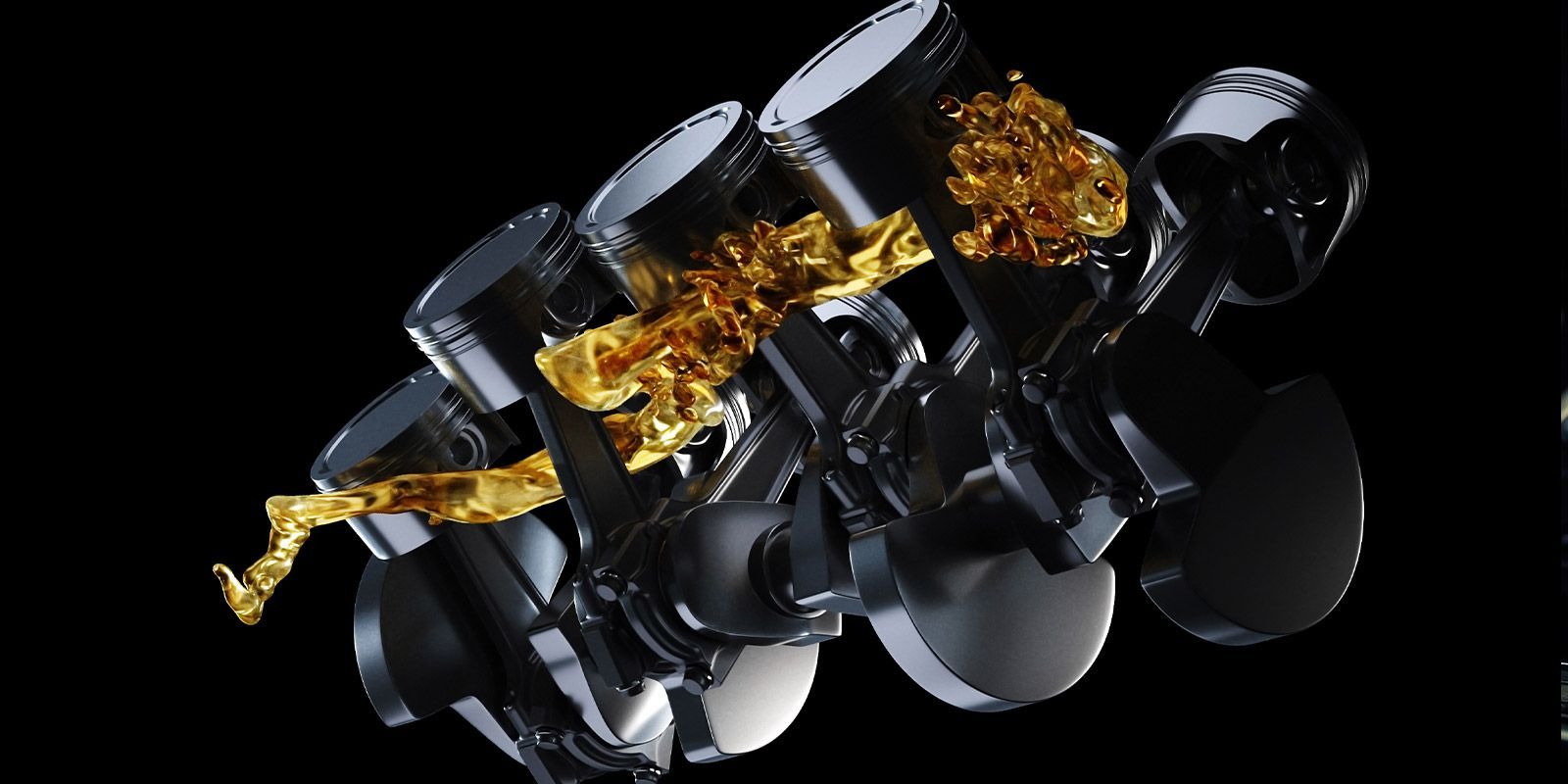
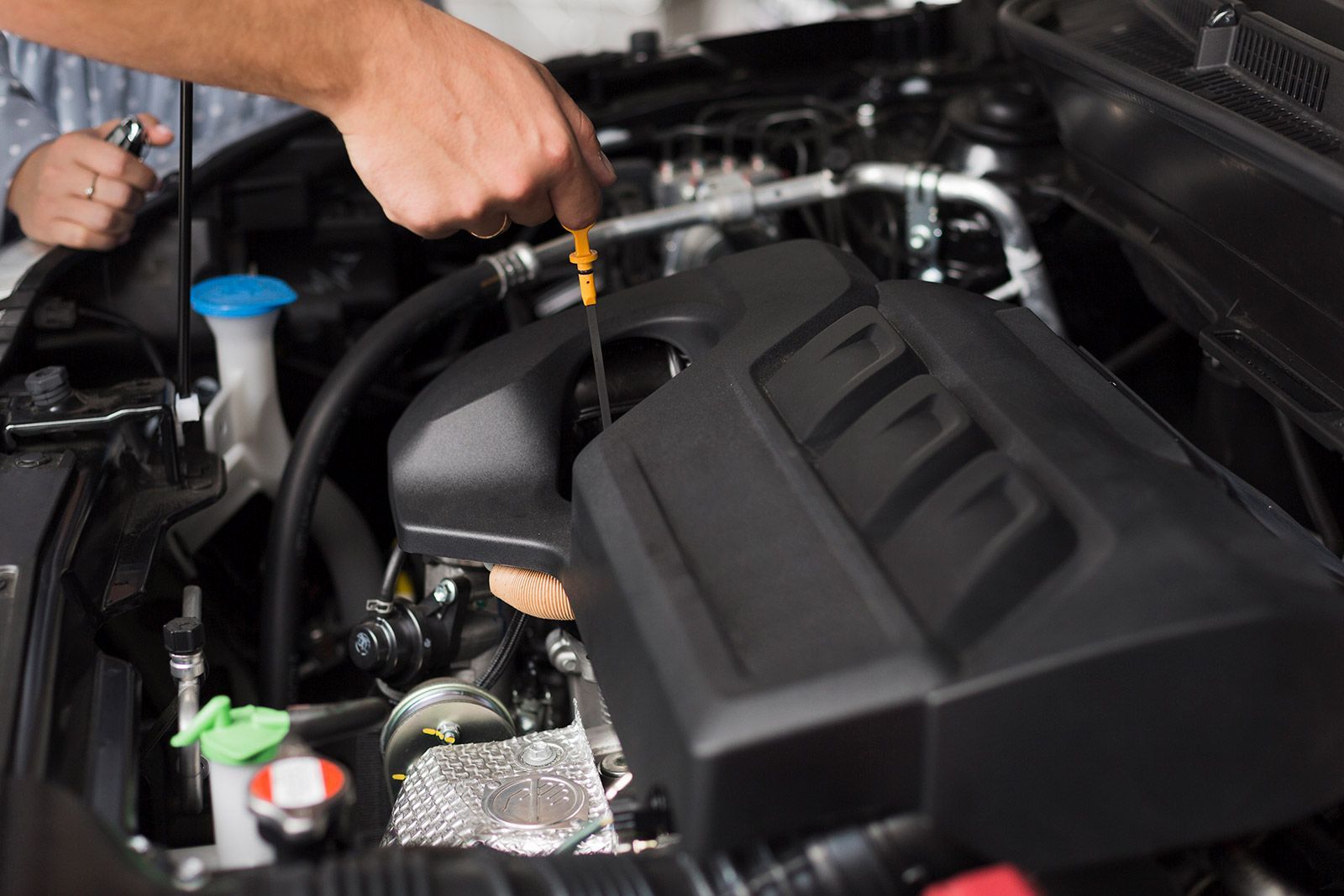
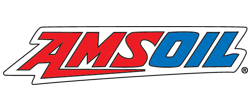




Share On: